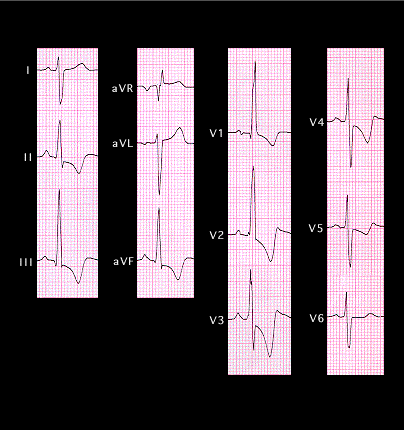
In both this patient and the patient with pulmonary artery hypertension whose ECG was shown on the preceding pages the pressure in the right ventricular equaled or exceeded left ventricular pressure, and both ECGs fulfill the criteria for right ventricular hypertrophy proposed by Sokolow and Lyon. There is right axis deviation, the QRS duration is less than 0.12 seconds, the R wave in V1 exceeds 7mm, and it, plus the S wave in V5 or V6, is greater than 10.5mm. In addition, the R to S wave ration in V1 is greater than 1.
